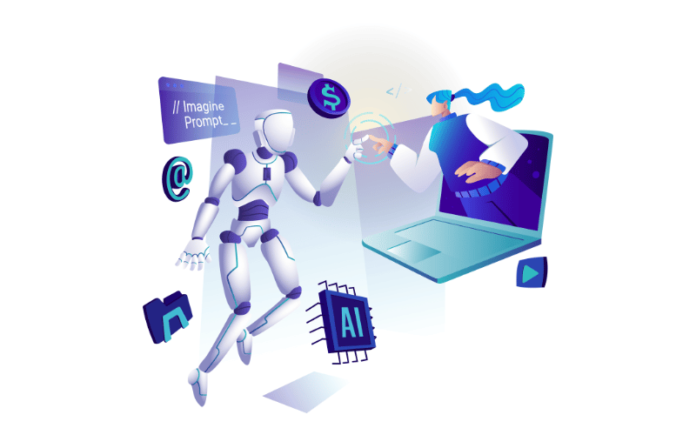AI-powered image editors are revolutionizing the way we modify and enhance photos. With just a few text commands, these tools allow anyone—even beginners—to edit images effortlessly. But which free AI image editor is the best? In this article, we compare six free AI image editors, testing their ability to add objects, change text, remove watermarks, restyle images, and more.
1. Grok 3 Image Editor
Overview
Grok 3 Image Editor is accessible via X (formerly Twitter). It provides a basic set of AI-powered image editing tools but has limitations when it comes to modifying existing images.
Performance Tests:
- Add Object: Grok 3 generated a completely new image instead of modifying the original.
- Change Text: Failed multiple times to edit text within an image.
- Remove Watermark: It eventually removed a watermark, but again, replaced the original with a new image.
- Image Restyling: Successfully transformed an image into an anime style.
Pros & Cons:
✅ Works well for artistic transformations
❌ Struggles with modifying existing images, particularly with text edits
2. Google Gemini Flash 2
Overview
Gemini Flash 2 is Google’s AI image editor, available for free through Google AI Studio. It performed well in multiple tests and was able to retain the original image during modifications.
Performance Tests:
- Add Object: Successfully modified the original image.
- Change Text: Initially struggled but succeeded with a refined prompt.
- Remove Watermark: Failed initially but worked when reworded.
- Image Restyling: Unable to accurately apply anime-style effects.
- Remove Non-Text Watermarks: Succeeded in this task.
- Change Color: Successfully changed hair color.
- Replace Object: Effectively swapped objects.
- Combine Photos: Successfully merged two images (e.g., adding a red dress to a person).
Pros & Cons:
✅ Maintains original image quality while making edits
✅ Good at object removal and text editing
❌ Requires precise prompts for best results
3. OpenAI ChatGPT Image Editor
Overview
OpenAI’s ChatGPT includes an image editing feature, but it is heavily restricted.
Performance Tests:
- It refused to edit most images due to strict content policies.
- Worked only for basic restyling like changing artistic styles.
Pros & Cons:
✅ Suitable for artistic modifications
❌ Too restrictive for general image editing
4. Tight Inversion
Overview
Tight Inversion, available on Hugging Face, allows users to fine-tune edits with advanced controls.
Editing Features:
- Users can adjust the IPA Scale to balance realism and AI modifications.
- The Guidance Scale controls how strictly the AI follows edit instructions.
- The Sharpening Factor helps target specific areas for edits.
Pros & Cons:
✅ Provides high control over edits
❌ Requires manual tuning for best results
5. CodeFormer
Overview
CodeFormer is a free AI tool specializing in face restoration and enhancement.
Editing Features:
- Pre-Face Align: Ensures faces are properly positioned before enhancement.
- Background Enhance: Improves the image background while keeping the face intact.
- Face Upsample: Increases face resolution for a sharper look.
- Rescaling Factor: Enlarges the image up to four times its original size.
- CodeFormer Fidelity: Adjusts between quality and facial identity preservation.
Pros & Cons:
✅ Excellent for improving face quality and resolution
❌ Not ideal for general photo editing
6. Segmind
Overview
Segmind is an AI-powered image editor that offers features like face swapping. It provides free credits but is not entirely free.
Editing Features:
- AI Face Swap:
- Face Mode: Swaps only the face.
- Head Mode: Swaps the entire head.
Pros & Cons:
✅ Good for realistic face swapping
❌ Limited free usage due to credit system
📌 Summary & Best Uses
| AI Tool | Best For | Limitations |
|---|---|---|
| Grok 3 | Anime-style transformations | Creates new images instead of modifying originals |
| Gemini Flash 2 | Text editing, color changes, object addition | Needs precise prompts |
| ChatGPT Editor | Light artistic edits | Overly restricted |
| Tight Inversion | Advanced editing with fine control | Requires manual tuning |
| CodeFormer | Face restoration & enhancement | Limited to facial edits |
| Segmind | Face swapping | Limited free credits |
Final Thoughts
- Best for casual users: Google Gemini Flash 2 (for most editing tasks).
- Best for artistic edits: Tight Inversion & Grok 3 (for anime-style transformations).
- Best for face restoration: CodeFormer (for improving photo quality).
- Best for face swapping: Segmind (but has limited free credits).
Each AI image editor has strengths and weaknesses, so choosing the right tool depends on your needs. Have you tried any of these AI editors? Let us know in the comments!
